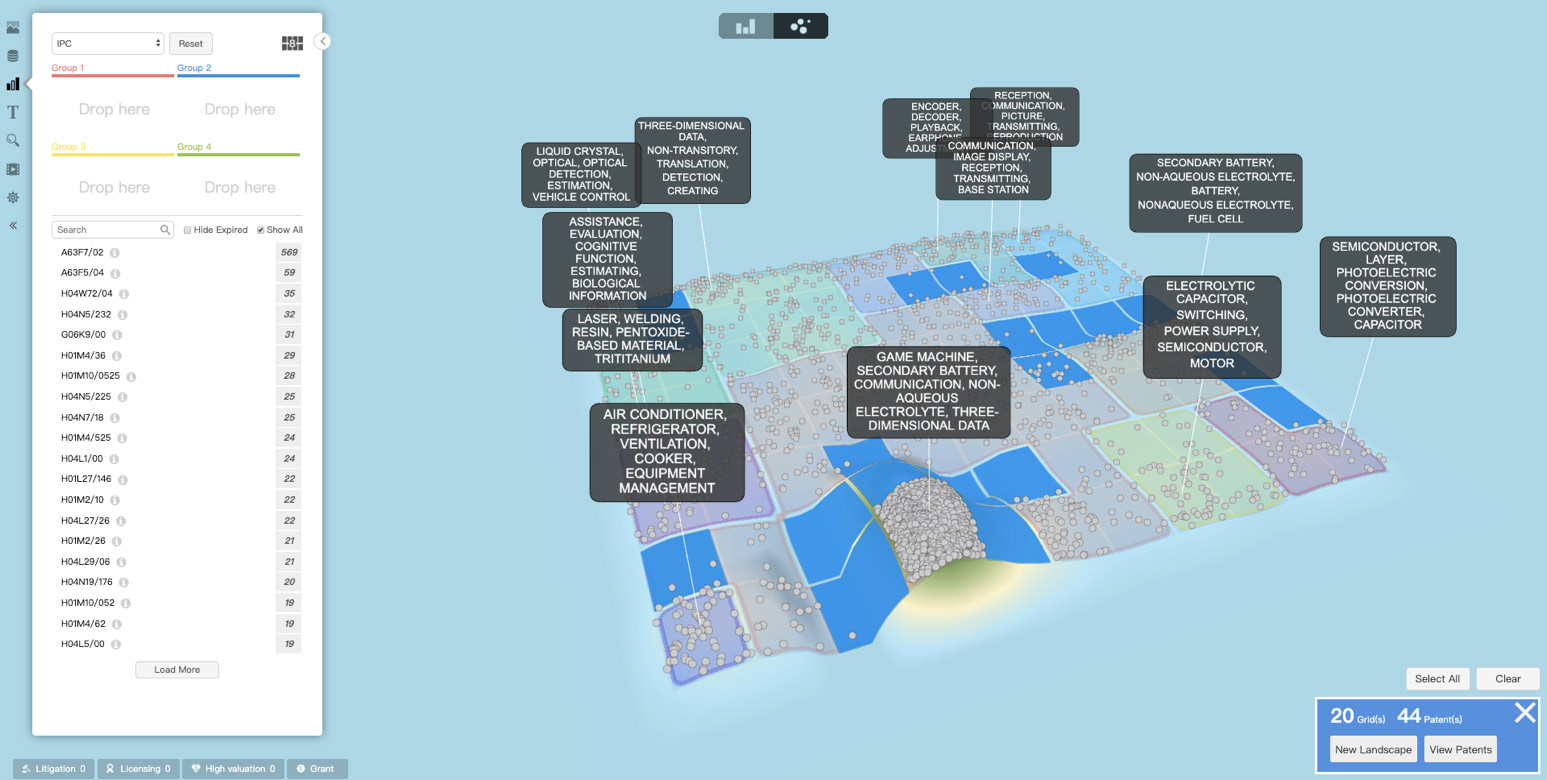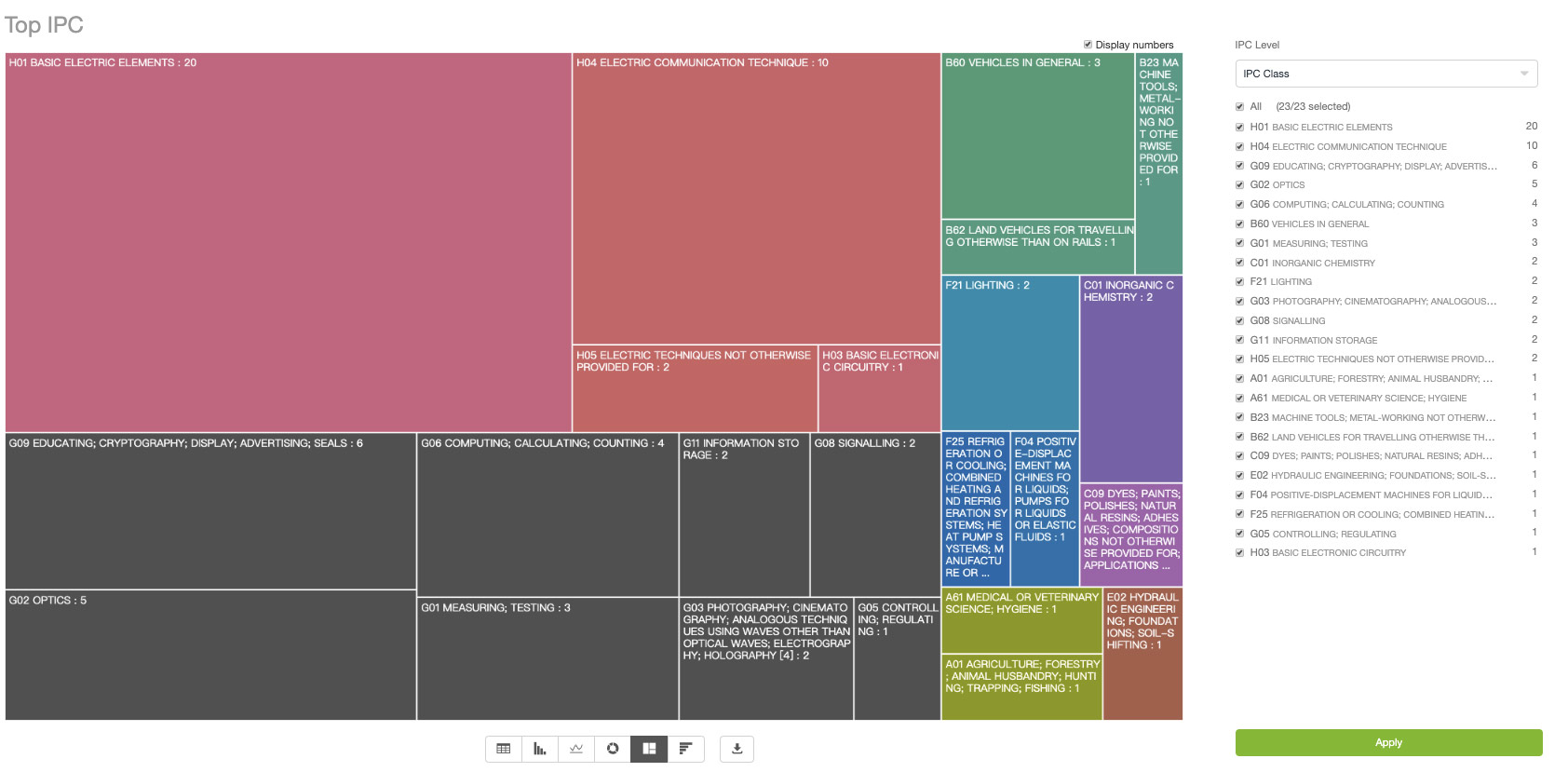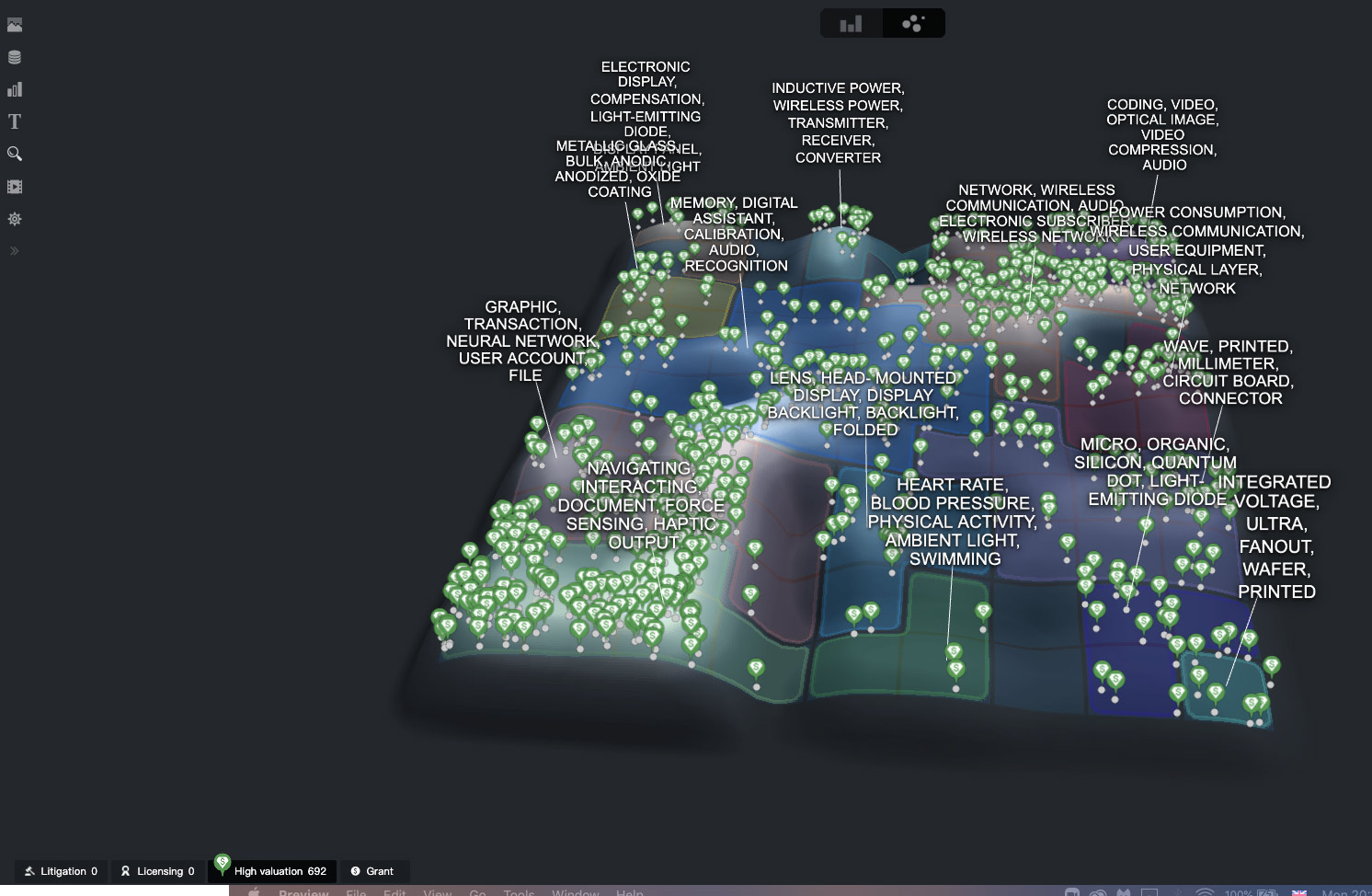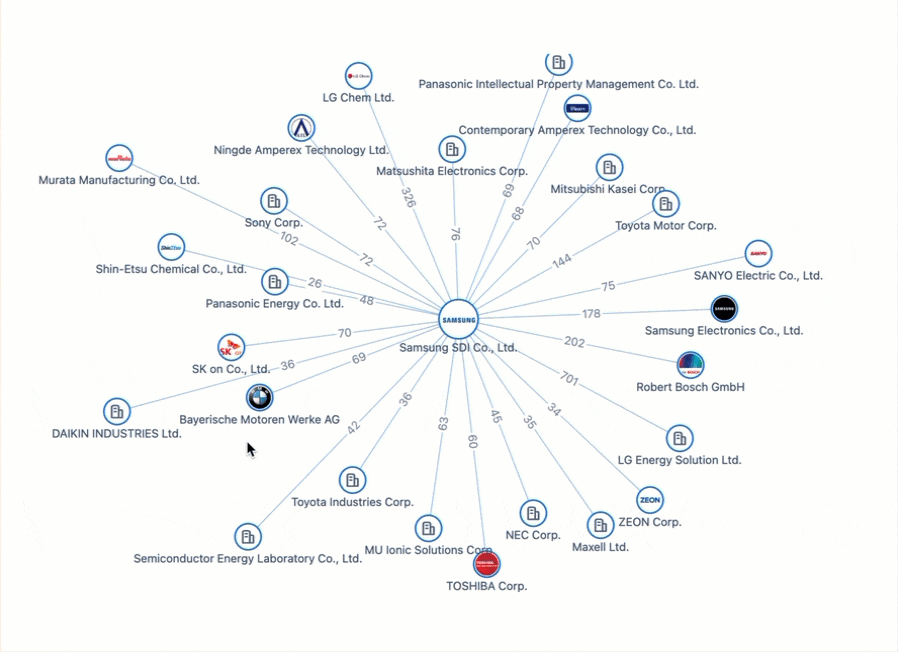How to Build Patent Landscapes for In-Depth Value & Competitor Analysis
If you want to be the first-to-market, you need deeper insights on your competitors. You can gain key insights around your competitor assets, IP strategies, and partners, as well as any whitespace and litigious technology, all from well-made patent landscapes. In this short article, we show you how.
Disruptors lurking in the data
We’d all like to think we know our competitors, but do we really? The world of innovation has sprung some huge surprises on us in 2019. Players disrupting various industries in ways that were unforeseen, like Truepill touted as the new AWS of healthcare, and Nestlé and Smithfield joining Beyond Meat and Impossible Foods in providing plant-based burgers to the masses, being just some of them. With such unexpected moves, disruptors can come up from the woodwork anywhere.
With 7.7 billion people sharing our earthly home, it has been argued that certain ideas and inventions are thought up by different people at the same time.
The key is not the ideas themselves (although these are, of course, important), but how you can action them before anyone else can develop, monetize and disrupt the market before you do! And doing that relies on getting key competitor insights.
You can find out whether an idea you’re thinking of has been actioned before, or if there are any competitors that are thinking of taking a similar idea and running with it before you, or whether they want to drop electronics for a second and move into growing vegetables!
And patent landscaping is one of the main tools used by both R&D and IP teams to gain competitive insights needed to be first-to-market, and to do it without unnecessary risk.
But it all depends on how you build landscapes and knowing what the right signals are to empower your strategic innovation decisions.
We’ll go through these key signals, so by the end of this article you’ll know how to find out exactly what competitors are up to, what they may intend to do, and how you can bypass all of that to take the lead before they do—using nothing than a few patent landscapes!
Use your own portfolio as your guide
It’s one thing to read a generic technology report from a third party, but another to apply your own needs in building an easy to understand landscape to confirm which tech areas clearly encroach on your ideas.
The first step is basing your competitive intel from what you already know. Creating a patent landscape from your own portfolio helps you identify the tech areas you’d want to target from your areas of proven expertise.
The best way to determine your portfolio areas of expertise is by using patent classifications like International Patent Classification (IPC) codes. As these are the go-to library codes for patent technologies, you can select the top 5 and use any of these when looking at your core competitors.
Let’s do that! We’re going to pretend we’re Apple for this example. Here are Apple’s top 5 tech areas based on their patenting this year in the US: G06F3/0488, G06F1/16, G06F3/0484, G06F3/01.
Let’s now create a broad search on these top performing IPC codes, but look at them from the lens of screens. Then, we’ll limit them to pending and active patents, select the ones that are the most relevant, and populate them into a landscape:

Image: Landscape showing the biggest competitors for the top five IPCs that Apple have been filing in 2019
Looking at the top filing companies, we’ve achieved “our” (Apple’s) list of top competitors to monitor for these 5 IPCs over the next few years: Samsung, Google, IBM, Microsoft, Sony, Tencent Holdings, Seiko Epson, and Alibaba Group.
Still, even if we have a single competitor to watch, we need to be sure that they’re capturing absolutely every corner of the tech space they’ve filed into for some real competitor intel. Which takes us into the next point…
Specific competitor in mind? Broaden the lens
Do you have a traditional rival? Getting all their subsidiaries and acquired branches together into a single patent landscape gives you the best possible resource for assessing their patenting strengths.
Let’s use another interesting example like Panasonic here. As a conglomerate, they do everything from home construction to salad packs!
Using a feature like Corporate Tree, gather all your competitor’s main branches and acquisitions together, and then populate the landscape, making sure to focus on pending patent applications and active patents:

Image: Selecting the least densely populated grids in a landscape and compiling the IPCs represented by them shows you the areas that represent relative white space within that company’s portfolio. You may need to compare this to a greater IPC search of the entire market and see who is dominant in this area though.
Have a look at that diversity and filing activity! We know that they’re strongest in the following tech areas:
- A63F7/02: using falling playing bodies or playing bodies running on an inclined surface, e.g. pinball games [2006.01]
- A63F5/04: Disc roulettes; Dial roulettes; Teetotums; Dice-tops [2006.01]
- H04W72/04: Wireless resource allocation [2009.01]
Regardless, when analyzing the list of 44 patents that represent tech whitespaces, there is freedom to investigate the following IPC classes:

Image: Gathering the patents that represent a competitor’s least densely filed areas within a landscape into an Analyze view.
These outline technologies that may represent an opening for you to file into or can indicate a new competitor who specializes in these technologies. Running a search on these IPC classes will provide you further insight into new competitors to add to your watch list!
Know their partners
No man is an island, and competitors know this too. The world of innovation includes many opportunities for tech transfers and licensing, providing a mutually lucrative way for you and other companies, universities and research labs to cooperate on commercialized patents and build out your intellectual property (IP) and reputation.
You can corner competitors by knowing who they work with using patent landscaping. Having a go-to list of their partners that for their licensing or joint research and development will help you come up with partnering with them in future, or with other similar players to gain hold of some tricky tech areas you might need their expertise, development or selling power in.
Let’s stick with Panasonic for this one. On your competitor landscape, open a list of patents for which they weren’t the only listed assignee (otherwise known as the patent owner).

Image: A landscape showing pending patent applications for Panasonic and its subsidiaries from the start of 2019. Highlighting patents owned by both Panasonic and non-subsidiaries provide a quick go-to list of partners. In this case: Honda, Nissan, Kyoto and Osaka Universities, and Toyota.
As long as these companies aren’t one of your competitor’s subsidiaries, they’ll be a potential partner, and you can approach them with your chosen projects. You’ll have to come up with the right pitch, but from the other indicators you’ll gain from landscapes, you would have an easier time getting them on board.
You’d need a landscape platform that easily picks out licensing opportunities but getting this licensing list provides you with their key licensees. You can approach them if you’re interested in similar arrangements, but chances are they’re already keeping an eye on your activities, and the moment you file into similar technology areas, they will be ready to approach you!
Find out what they value the most
Once you know exactly which patents are worth the most within a competitor’s portfolio, you receive the insight needed to know whether a tech area will provide you lucrative returns if you want to license or essentially sell the patent rights to another company.

Image: A landscape showing pending patent applications for Panasonic and its subsidiaries from the start of 2019. Highlighting patents owned by both Panasonic and non-subsidiaries provide a quick go-to list of partners. In this case: Honda, Nissan, Kyoto and Osaka Universities, and Toyota.
On your landscape, list patents that are over $1 million. This will provide you a good idea of what the market considers valuable, which means you get to see what technologies are considered as especially important. What is valuable to the market means more successfully commercialized patents—and more profit for you.
Understand their opportunities
Patents are lucrative things. They are bought and sold, licensed-out or shared. This provides you with some clear routes to get ahead of the competition. You may want to check the following area on your landscape for these telling points:
Licensing: Use this to instantly learn which of your competitor patents had licensing agreements applied to them. This will enable you to get a good idea of who is working together as well as what tech fields have had a lot of collaboration between companies.
Tech transfers: you can find this information simply by grouping all shared assignees that aren’t the competitor and highlighting the universities or academic institutions from them. These patents would represent tech transfers, in which universities seek commercial partners to develop their ideas into sellable products or technology. This is big business now, and you may want to consider this going forward as a viable way of getting ahead.
By clearly reporting on the kinds of commercialization opportunities that are open to your team and showing these side-by-side would be useful to ensure your team, and all major stakeholders within the company, are aligned with your decisions.
Build reports to get the right teams involved
Once you have the right insights put together, you’ll need to report to the right teams in order to have everyone align quickly, wasting no time in going full speed for the strategy you decide on.
Share the entire landscape with your teams as is—or use the patents from it to create a specific dashboard in order to get even more insights around the dataset. This way, the landscape acts as a starting point for providing your team the right signals to hone-in on and make the right decisions.
Take the title for yourself!
We hope the tips shared in this article help you build more robust landscapes to stay one step ahead of the competition. Patent landscapes, and the insight hidden within patents themselves, can help bolster your knowledge of exactly who your competitors are, who the current unknown disruptors will be, and predict what they do several years down the line—plus who they work with, how they look to prosper, and where they want to attack your IP assets.
CTA: We’ve just released an eBook that is your definitive guide to using IP data skilfully for gaining a hawk’s eye view of your competitors—and the market. Read it here: Why IP data is R&D’s new competitive advantage.
Your recommended content
-

Patsnap Surpasses US$100 Million in Annual Recurring Revenue
Category: Article | Category: News/PR
Wednesday, June 12, 2024
Patsnap has reached a significant milestone of achieving $100M in Annual Recurring Revenue (ARR), marking an impressive 20% year-over-year growth in 2023. This milestone highlights the massive and meaningful value our platform brings to over 12,000 IP and R&D teams across 50 countries, driving efficiency, productivity, and collaboration.
-

Introducing Hiro, an AI assistant built for IP and R&D workflows
Category: AI advancements | Category: AI development | Category: AI-tools | Category: Article | Category: artificial intelligence
Tuesday, May 14, 2024
Powered by Patsnap’s industry-specific LLM, Hiro is designed to streamline IP and R&D workflows from ideation to product launch. With its robust AI capabilities, Hiro brings a new level of efficiency, precision, and security to tasks that were once time-consuming and labor-intensive.What sets Hiro apart is that it draws from our large language model that’s been trained on market-leading patent records, academic papers, and proprietary innovation data. This ensures we deliver more accurate and reliable results for every prompt.
-

Powering the Future of Electric Vehicles: The Battle for Battery Innovation and Patents
Category: Article | Category: battery technology | Category: electric vehicle | Category: EV | Category: lithium ion | Category: lithium ion battery | Category: NEV | Category: new energy vehicles
Monday, April 22, 2024
In the ever-evolving landscape of innovation, the electric vehicle (EV) industry stands as a beacon of technological transformation. As we explore the patents propelling the EV revolution, Apple's venture serves as a poignant example of the challenges even industry giants face in this competitive arena. Join us on a journey through the global patent landscape, where the quest for superior power solutions unfolds, and where the true pioneers of the EV revolution are making their mark.